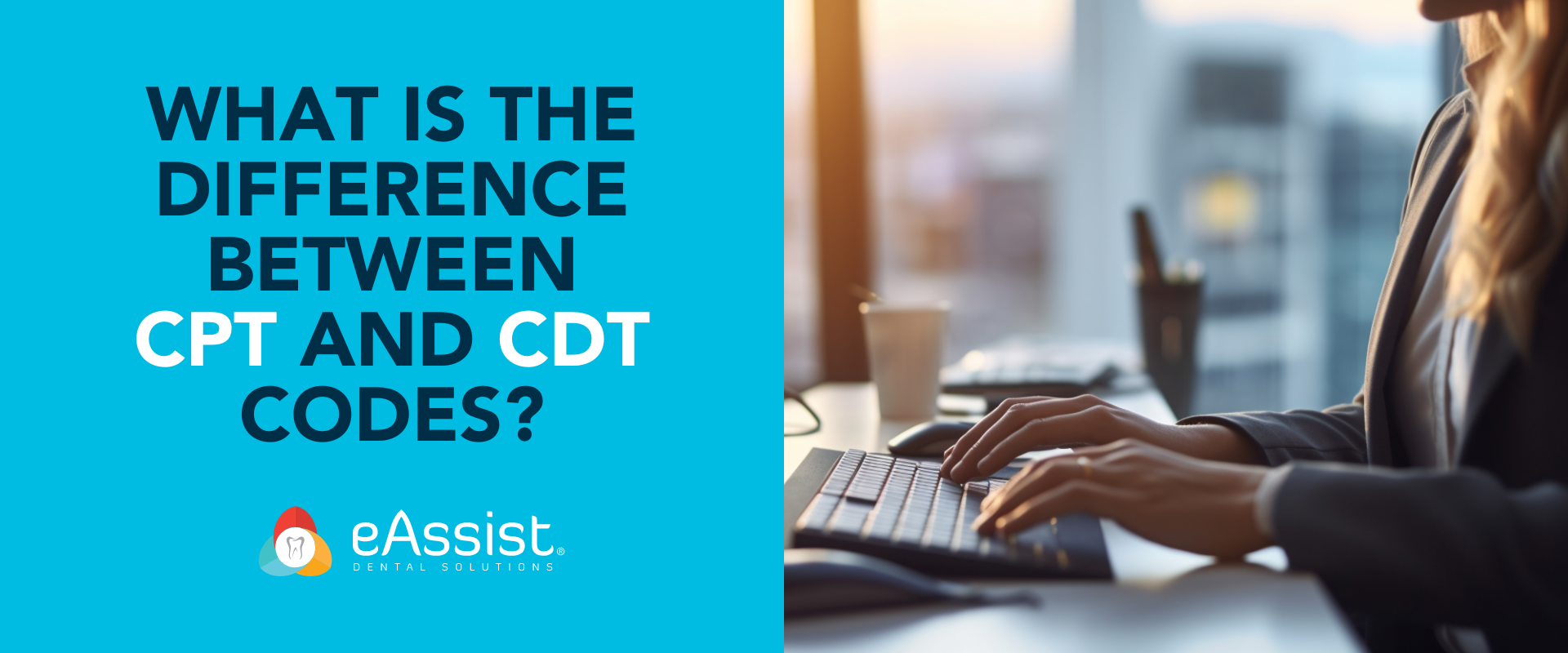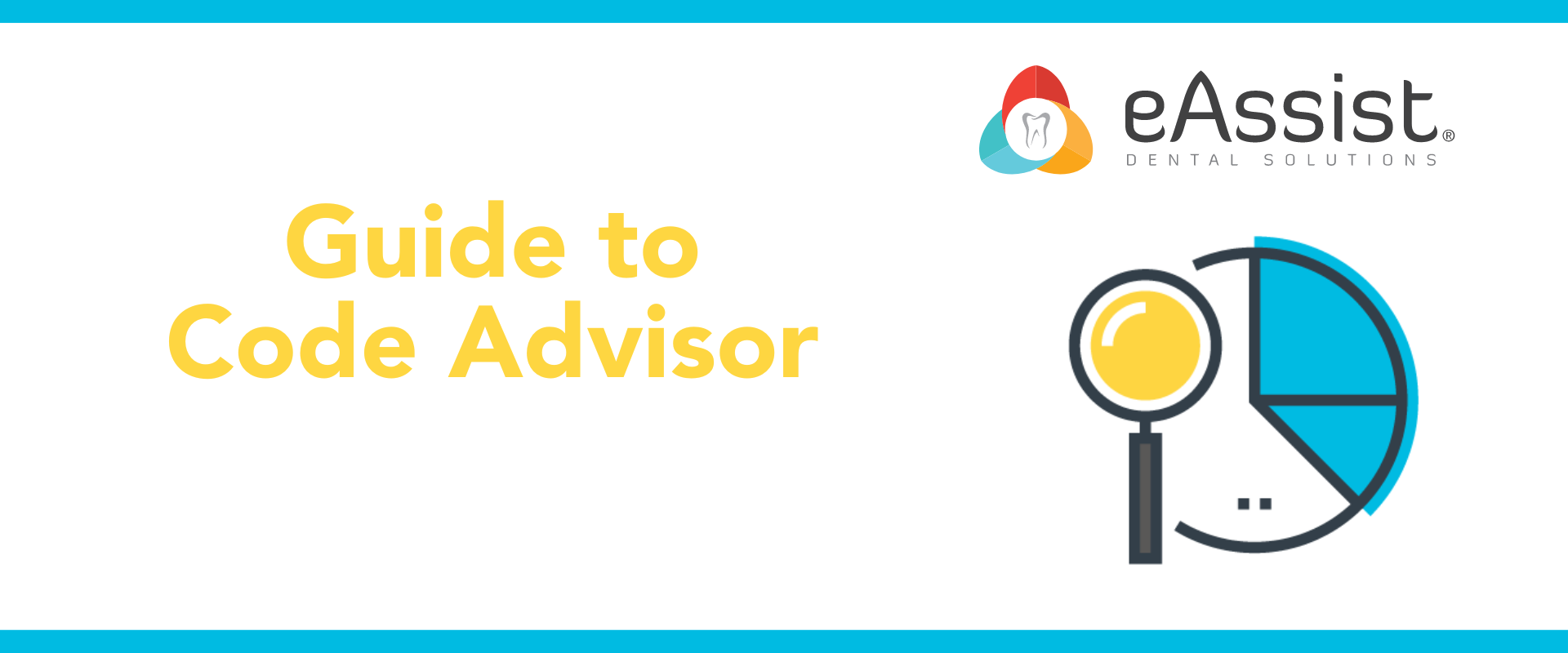On the surface, CPT and CDT codes appear to be the same. After all, they’re only one letter apart. But the reality is that they are two very different coding systems used in the healthcare industry. The argument can be made that they are related, but they’re certainly not interchangeable. That being said, as dental care and medical care become more symbiotic, chances are you will grow familiar with both.
What is a CPT Code?
Current Procedural Terminology, or CPT, was developed by the American Medical Association in 1966. According to the AMA, “…CPT codes provide a uniform nomenclature for coding medical procedures and services.” In other words, every medical procedure has a specific code that allows uniform billing across all healthcare providers, be they hospitals, medical offices, or insurance companies.
What is a CDT Code?
Current Dental Terminology, or CDT, was developed by the American Dental Association in 1969. According to the ADA, “the CDT Code provides a means to document services that dentists are delivering.” Just as every medical procedure has a specific code, the same applies to every dental procedure allowing uniform billing across dental practices and insurance companies.
What do CPT and CDT codes look like?
Both CPT and CDT codes contain 5 digits but that’s where their similarity ends. CPT codes either consist of both numbers and letters or numbers alone, while CDT codes always begin with the letter D followed by 4 numbers. For example, a CPT code for anesthesia would be 00100 while the CDT code would be D9220.
Are CPT and CDT codes interchangeable?
Generally, no. CPT codes are billed to medical insurance carriers while CDT codes are billed to dental insurance carriers. That being said, there are rare cases when one accepts the other as in the case of federal medical plans. Because federal medical plans have a dental rider, they will accept CDT codes.
Do CPT codes apply to dentistry?
CPT codes do apply to dentistry, particularly when it comes to specialty treatment such as oral surgery and endodontics. In fact, there are multiple medical carriers that will cover such treatment when billed.
Can dentists bill CPT codes?
Yes, a dentist can bill CPT codes. As medical care and dental care continue to intertwine, CPT codes are becoming more commonplace in a dental office. For instance, multiple medical carriers already cover certain surgical and endodontic treatments, as mentioned above. That’s why it’s best to verify the patient’s medical insurance coverage as well as their dental coverage when they visit the office. Crossover coverage is becoming increasingly common and now is a good time to be prepared to handle claims in both fields. Consider outsourcing this task to a knowledgeable, remote team to ease the burden of this added workload.

What are ICD-10 Codes?
Developed by the World Health Organization, International Classification of Diseases, or ICD-10, codes are medical diagnostic codes. CPT codes apply to the treatment performed whereas ICD codes apply to the diagnostics behind that treatment.
Do ICD-10 codes apply to dentistry?
ICD-10 codes do apply to dentistry, particularly in situations where dental care is the result of an accident or an underlying disease. Currently, they are rarely used but as medical billing increases in dental practices they may become more commonplace.
Does medical coding require certification?
No US state requires certification for medical coding, although it can offer an advantage to those seeking employment where it applies. Medical coding does require a knowledge base of not only the codes themselves but also the diagnostics and procedures they apply to, as well as the CMS-1500 form used to submit medical claims to insurance carriers.
Are there any resources for medical coding?
Yes, there are resources for medical coding. One to consider is Medical Dental Cross Coding with Confidence (2023 edition) from Dr. Charles Blair’s Practice Booster. This comprehensive guide includes such topics as crossing coding CDT to CPT codes, completing the CMS-1500 medical claim form, and ICD-10 Codes.

As dental care and medical care continue to join forces, it’s increasingly important to be aware of the differences between CDT and CPT codes, as well as the role that both CPT and ICD-10 codes will play in the office. At eAssist, the Success Consultants who use our dental billing platform have experience with both medical and dental plans and can assist your office in obtaining revenue from both. To learn more, complete the form below.








0 Comments